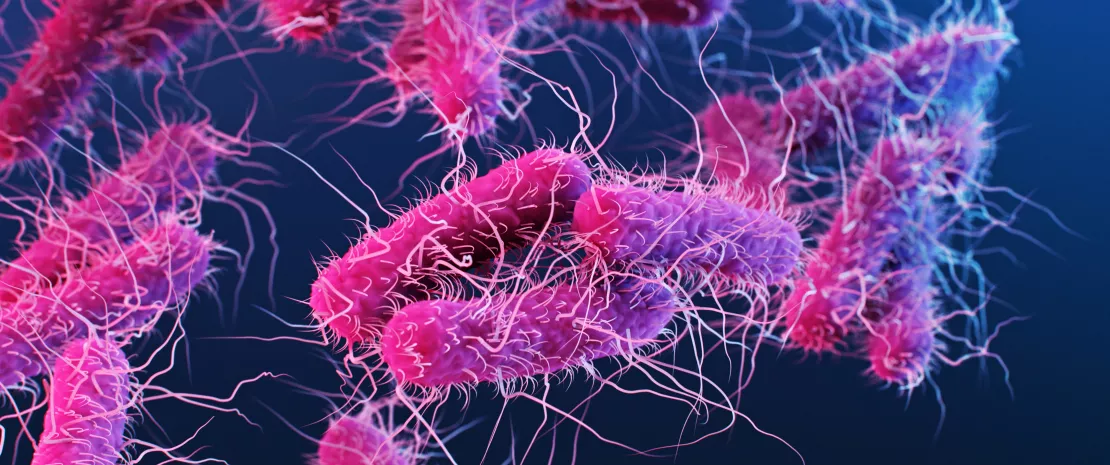Urinary tract infections (UTIs) are among the most common bacterial infections worldwide. They occur when bacteria from the skin or rectum enter the urethra, infecting the urinary tract.1,2 A recent US study followed thirty women suffering from UTIs and undergoing antibiotic treatment for one year. The findings are clear: women with UTIs are caught in a vicious circle. Antibiotics prescribed to relieve the current crisis may set the stage for the next one.
It begins in the gut microbiota
It all starts in the gut. Bacteria called Escherichia coli travel from the anus up the vulva into the urinary tract. So far nothing unusual, since the same phenomenon is observed in women not prone to such infections. Usually, the immune system takes care of eliminating unwanted intruders. However, in women with chronic urinary tract infections, the immune system is not up to scratch. This is probably due to repeated antibiotic treatments that partly eliminate the bacteria responsible for regulating our immunity via small molecules produced in the gut which then pass into the bloodstream.
As a direct result, E. coli triggers a new urinary tract infection and the doctor, at a loss, prescribes a further antibiotic treatment. And here we go again, since this new treatment will certainly eliminate the bacteria in the bladder, but not the reservoir of comfortable E. coli in the gut.
What’s worse, the treatment may further disrupt friendly bacteria in the gut microbiota that help regulate the immune system so that it can prevent E. coli from reaching the bladder.
Changing strategy
The bottom line is that 20%-30% of women will quickly see their UTI return, not to mention the development of antibiotic resistance, which will complicate the treatment of any new crisis. How can the vicious circle be stopped? Perhaps by changing strategy. Instead of trying to eliminate undesirable bacteria regardless of any long-term collateral damage to the beneficial bacteria that regulate our immunity, another option is to pamper the bacteria that ensure a balanced gut microbiota. The basis for this idea is that women prone to urinary tract infections have a gut microbiota that is less diverse and less rich in friendly bacteria.
Hence the authors’ suggestion to focus on microbiota therapies to restore bacterial communities in infection-prone women.

























